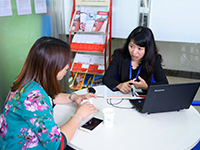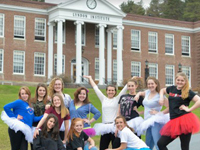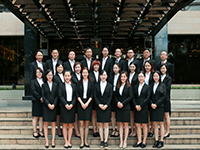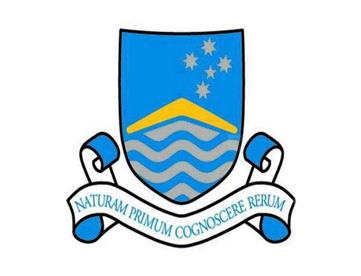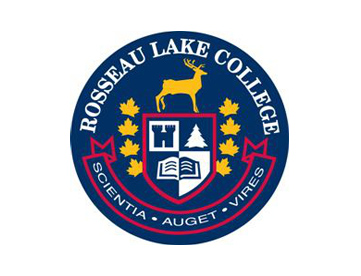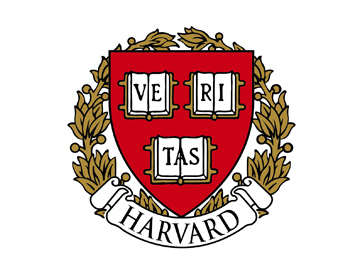5月亚洲SAT考情分析,阅读、数学难度有点炸
自CB调整了SAT国际考场的考试安排后,5月的SAT考试就备受各方关注,成为上半年重要的一场考试。今天刚刚落下帷幕的SAT考试,总体而言,难度适中,使用的题目均未在北美考试过,体现了CB对于公平性的重视。下面就为SATers带来新鲜的考情速递。
一、当场炸裂的SAT阅读
2017年的SAT似乎也不能开心的玩耍了,今天出了考场的同学纷纷表示阅读简直原地炸裂。整体难度中等偏高,almost接近2016年5月亚洲考试和PSAT真题。
考试概况
本次新SAT亚洲卷阅读部分整体难度中等偏上,与2016年不同的是本次考试科技文与社科文章的难度略有下降,但是考察难点有所增加。与2016年5月亚洲卷相比较在部分篇章和题目上略难, 但整体难度持平;题目类型均在官方考点范围之内, 最常规和具有代表性的题型均有所涉及, 如主旨题、细节题、循证题、词汇题、图表题等, 但修辞目的题的数量不多, 且没有考查结构题. 所有题型对应的题目难度总体处于正常水平, 但第二篇文章的图表题因信息较为复杂且容易混淆。
考试内容
篇目内容主题难度
第一篇小说A Strange and Sublime Address
By Amit Chaudhuri 由于故事背景的文化特殊性所以理解上有些谢姐可能不到位,难度不大,但是比较灵活
第二篇社科(社会学心理学)How We Understand What Others Think, Believe, Feel, and Want.类似于OG中gift giving这篇文章,以及ethical economy,主要考察社会心理学方面的题目,配有图表题但是难度不大
第三篇科学(天文学)天文类有关于谷神星的文章专有名词难度大,天文学背景知识会造成理解上的困难和障碍
第四篇历史双篇(联邦制)Two passages based on The Virginia Ratifying Convention in1788. 第一篇文章Patrick Henry极力反对建立新的联邦政府而第二篇文章Edmund Randolph则持反对意见,文章难度本身不大,但是前面科技文以及小说的完成时间比较长,所以会造成历史篇章没时间做
第五篇科学(海洋植物学)主要讨论科学家在海藻中发现了一种新物质。总体结构和语言难度适中
下半年备考建议
后期因为取消了6月的考试,所以后续复习计划很大程度上取决于是否能够去美国参加考试。建议大家报名8月的美国考试,因为有美国封闭班的存在可以很大程度上将自己的考试时间表提前很多,同时留出更大的空间。
如果有同学不能去美国考试那么10月的SAT考试就至关重要了。6-7月两个月可以用来先冲托福成绩,或者按部就班的进行SAT阅读的泛读训练,比如养成读小说的习惯以及分析历史文章的习惯。同时对于可汗学院的阅读文章也有计划的进行每周2-3次的精读训练。
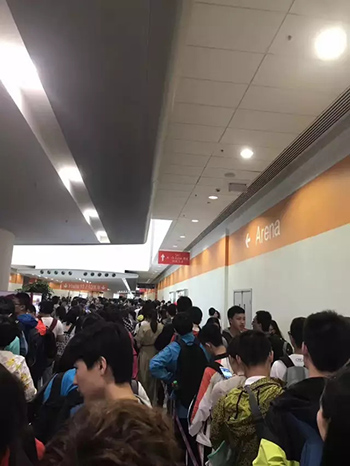
二、心旷神怡的SAT语法
考试概况
本次考试语法部分难度中等偏下,很多同学反映做起来比较顺手。
考试内容
篇章顺序主要内容语法知识点文法知识点
第1篇主要内容为建立病人电子版病例,这一重大的举措对于医学界有重要的影响,可以克服很多纸质病例的缺点,能够共享医疗信息,而且患者也不用重复检查。逗号、平行结构、重复、主谓一致等总起句、合并句子题、逻辑关系、句子插入题等
第2篇讲述beaver在生态系统中的重要性,可以通过建造堤坝来保持生态平衡。词汇题、平行结构等句子插入题、图表题等
第3篇讲述佛罗伦萨希望建立雕像来体现城市的伟大和壮观,请米开朗琪罗完成一座David雕像,但是遇到了困难:1. 大理石材料损坏,2. 落成位置选择。最终在两年内建成了这座兼具美观和人文意义的雕塑。词汇题、动词时态、就近修饰等加删句子题、主旨题等
第4篇讲述Levin和Rocco这两个人的工作模式,先讲了优势,后又提到了不足。最后总结虽有有问题,但是仍然值得一试。词汇题、比较对象一致、代词等总起句、合并句子提、逻辑连接词等
下半年备考建议
1、背诵知识点,夯实知识点,语法框架必须熟练,考过的同学知识点上基本上是OK的,但是整体框架不熟,整体逻辑性较差,做题经常模棱两可,在考场上容易失分;
2、整理错题并背诵。很多同学做错的题目一错再错,其实是没有效果的,一定要纠正原来错误的思维,将正确的思维印入脑中,保证同样的知识点不重复犯错。
3、注意审题,选项紧扣题干要求。
4、辨析词义,语法中出现的词汇并不难,但是题目数量不断增加,考察难度也有提升,所以同学们在今后的学习中一定要多加总结、养成使用英英字典的习惯。
5、刷题。仍然以真题为纲,加以可汗、Ivy Global开普兰、普林斯顿等的练习。
三、再次炸裂的SAT数学
考试概况
本次SAT数学考试难度较高,超过OG4套难度,有同学反映S4计算量大没有做完,不过相信被开普兰和普林虐过的同学应对起来还是得心应手的。
考试内容
知识板块考察内容
代数核心知识方程组求解、一次函数、指数函数、图像平移
解决问题数据分析线性回归、概率、统计,
高等数学基础二次函数、多项式因式定理
附加知识坐标几何、解析几何、圆的标准方程、30°直角三角形边的计算;没有考察复数的概念和运算;
下半年备考建议
1、积累数学词汇以及常用表达,提高英文阅读理解题干的能力;
2、夯实知识点,查缺补漏,将知识点上的漏洞补起来,比如线性回归中散点和回归方程的意义等;
3、限时刷题,把握做题的节奏,对于有余力的同学,刷题的难度一定要跟上,建议刷普林斯顿和开普兰的题目;
4、合理使用计算器,提高计算速度与准确性。
四、写作
考试概况
本次写作部分的考试延续了之前几次考试的一贯风格, 从话题内容上来看, 依然选择了政治正确的女性主义内容,作者是Meredith Wadman, 选自2013年Times的一篇文章, 名为 “How to Increase the Number of Women Winning Nobel Price”, 文章主要探讨了女性在科学研究领域中所遇到的重重困难, 解释了女性在实现个人科学追求时所面临的家庭及学术的双重压力. 文章的主旨在题目中的argument中直接体现: “science careers should be more achievable for women who wants toraise families”. 整篇文章的内容比较简单,词汇语法上面的难度也不高,找各类要素的难度也不大,非常清晰。
考点分析
文章以描绘诺贝尔医学奖获得者Carol Greider的一个日常生活中的画面开篇, 表现了女性科学家在日常生活中除了学术压力外, 还需要承担更多家庭事务的责任. 这使用到了example的写作手法.
接下来, 文章中的第二段, 以 “unfortunately”一词直接表现了在众多获得诺贝尔奖的科学家中, 女性人数所占比重非常小. 此处是一个明显的对比,而这个对比除了有内容上证明作者所描述的观点确实存在这一现象之外,还兼备引起读者兴趣的作用。所以在写作的时候,记得要将结构上的作用写上去。
第三段中, 大量的例子及数据使用表现出在过去的诺贝尔获奖史中, 女性获得奖项的比重. 例如, “two physics laureates have been women”, “four of the 165”, “5percent of”. 这一点的话主要也是为了证明女性在科研方面所得到了成就不够多。通过数据直接证明了作者的观点。
第四段中, 作者呈现了数位历史上获得奖项的女科学家她们在日常生活中所面临的压力, 诸如, “secretly conducted experiments in her bedroom”, “whose fatherthought a women’s place was in her home”, “prevented from attending college byher mother”.这里主要通过事实来表明女性在生活中的压力。与之前讲过的内容合为一体,很好得证明了作者所要说明的观点。
第六段中, 作者通过一个rhetorical question “what, specifically, should institutions do tooffer such support?”引出各个机构应该采取措施帮助女性科学家实现科学研究的梦想. 记得rhetoric question中需要写到问题的答案。
文章最后一段, 作者提出了直接的号召, 倡导社会共同建立一个利于女性科学家发展的环境. 这一写作手法同样契合我们之前遇到的大部分文章的结局. 这里更多的就是appeal to emotion了。
总体来说, 这篇文章的写作手法比较丰富, 易于大家发现并且进行分析.
下面为了各位考生更加熟悉文章内容,附上这篇文章未删减版的原文:
How To Increase the Number ofWomen Winning Nobel Prizes
By Meredith Wadman Oct. 24, 2013, Time
1. The mother of tweens was foldinglaundry at 5 a.m. before going to an early spinning class when the phonerang. It was October 2009 and Carol Greider, a biologist atJohns HopkinsUniversity, picked up and heard a voice from Stockholm. She had won thatyear’s Nobel Prize in medicine.
2. Unfortunately, Greider remains ararity in the pantheon of Nobel scientists. And that’s partly because wehaven’t done enough to help young female scientists balance the demands ofacademic research with the pull of family responsibility. That needs tochange.
3. Admittedly, today’s situation isbetter than it was when Greider entered grad school in the early 80s, nevermind in the dark days of the preceding decades. Then, when women were scarcelyto be found at undergraduate lab benches, the results in the rarefied reachesof Stockholm couldn’t help but be dismal. Since the awards were launched in1901, two physics laureates have been women: Marie Curie in 1903 and MariaGoeppert Mayer in1963. In chemistry,four of the 165 winners have beenwomen. (Marie Curie was one of them, in 1911;she is the only woman to have wontwo Nobels.) Women have won 5 percent of the coveted awards in physiologyor medicine. And it was 2009 before Elinor Ostrom,of Indiana University and Arizona StateUniversity, became thefirst-ever female laureate in economics.
4. In fact, 2009 was something of abanner year for women — Greider shared her award with her mentor, ElizabethBlackburn, of the University ofCalifornia at San Francisco; and Israel’s AdaYonath shared the prize in chemistry. Since then, men have continued to sweepthe science awards.
To be a female Nobel winner has not onlyrequired brilliance, but also preternatural determination in the face ofcultural, social and political obstacles. The Italian neurologist RitaLevi-Montalcini secretly conducted experiments in her bedroom in Mussolini’sItaly. Francoise Barre-Sinoussi, the Parisian who co-discovered the AIDS virus– and whose father thought a women’s place was in the home –was in the lab onher wedding day. Her fiancé had to call her to remind her to turn up atthe ceremony. Barbara McClintock, the U.S.geneticist who won the prize in 1983,was nearly prevented from attending college by her mother. She was afraidhigher education would make her daughter unmarriageable.
5. All of this was decades ago, beforerecent campaigns to encourage more young women to choose STEM (science,technology, engineering and math) careers;and, in the US, before the CivilRights Act, affirmative action and Title IX.What’s the excuse in 2013?
6. What, specifically, shouldinstitutions do to offer such support?Universities can make meaningful policychanges, such as allowing women with young children to stop the tenure clockfor a period of time — an option available at some but not all academiccenters. They should ensure that young female scientists have dedicated,top-notch mentors. And they can guarantee paid maternity land parentalleave—something that’s woefully lacking for junior scientists at most U.S.institutions.
7. Federal agencies also have a roleto play. Big funders, led by theNational Institutes of Health (NIH) havealready implemented policies like no-cost grant extensions that allowscientists with family obligations extratime to complete a project, and othersthat allow fellowship periods to be extended or deferred for childcare purposes. But agencies can, and should, do more. One task the government is especiallysuited to is longitudinal data collection on those family-friendlypolicies. Such data isn’t being collected systematically,and without itwe can’t know what policy changes are working, and which ones aren’t.
8. If we want top-drawer women to stayin science careers — and this country, beset by daunting, and growing, globalscience competition, could certainly use them – institutions of all stripesneed to show a far more serious commitment to supporting them.
9. To put it another way, if we wantto see more women celebrating inStockholm, we should strive to build a world inwhich the likes of Carol Greider are hardly ever to be found folding thelaundry at 5 in the morning.
Meredith Wadman is a Future Tense Fellow atNew America and an Oxford-educated physician. This article was written forthe New America Foundation’sWeeklyWonk.The views expressed are solely her own.
深圳华联留学是中国首批取得合法留学中介资质认证、全国留学服务行业第一批白名单的机构,是“3.15诚信公约”承诺诚信单位,也是广东省留学服务协会副会长单位、深圳分会会长单位,现在主营服务项目有美国留学、英国留学、加拿大留学等,免费咨询热线:0755-83667122。
同类文章排行
- 2019年GRE考试场次有哪些?黄金考位如何选择?
- 2020年考研时间公布!你属于“逃避式考研”吗?
- 2019年SAT考试考前注意事项清单!
- 托福还是雅思?GRE还是GMAT?2020年研究生留学申请出国考试时间汇总
- 2019年度SAT全球成绩报告,考试的人多了,分却低了!
- 超级全 | 出国留学考试类别种类大汇总
- Mark!2019年美国研究生申请GRE、GMAT考试时间出炉~
- 美国研究生考试,GRE与GMAT的区别在哪里?到底哪个考试更难?
- 名师攻略 | 留美读研,你最需要了解的考试信息在这里
- 2019雅思、托福、GRE考试时间整理,再不准备就来不及了!
最新资讯文章
您的浏览历史










